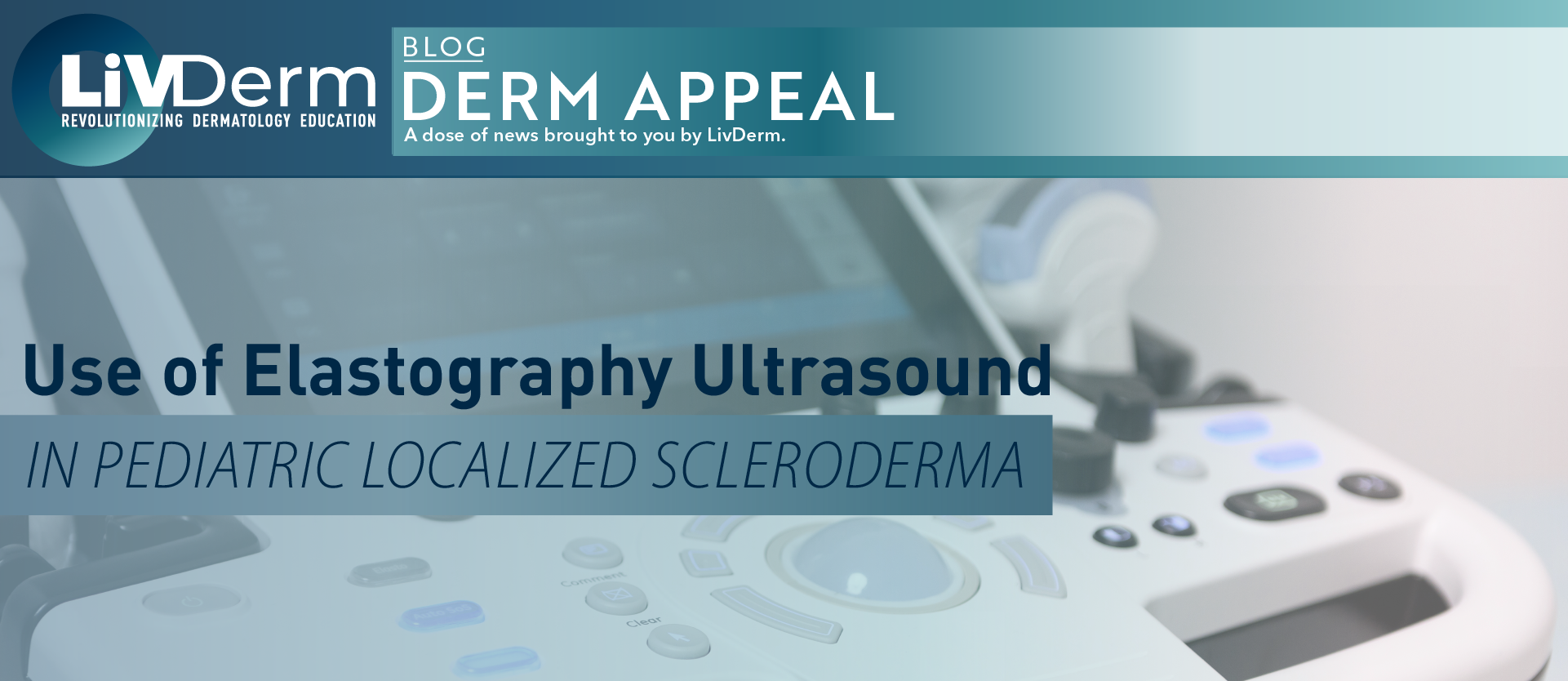Assessing and monitoring inflammation levels and tissue damage is a crucial aspect of managing localized scleroderma (LS). Previously, several objective clinical scoring methods have been proposed, however, the specificity of these methods remains unvalidated in larger cohort studies. As an emerging technique, shear-wave elastography (SWE) imaging may be used to distinguish localized scleroderma (LS) lesions from normal skin in pediatric patients and effectively assess disease activity, per results from a study published in Ultrasound in Medicine and Biology.
Elastography Ultrasound in LS Patients
As part of the study, researchers aimed to assess the feasibility and reliability of the elastography ultrasound method for the identification of lesions in children with LS. The team evaluated data gathered from pediatric patients who received care at the Morphea Clinic at the Hospital for Sick Children in Toronto, Canada. Participants had at least 1 localized scleroderma plaque with an area of less than 100 cm2 . The target lesion for study was identified and evaluated in each patient using existing metrics – the Physician Global Assessment of Disease Damage (PGA-D) and the Physician Global Assessment of Disease Activity (PGA-A). In addition, the research team extracted demographic data and clinical history from participant’s medical records.
The study’s cohort included 13 participants with a median age of 10 years and mean disease duration of 3.1 years; 10 of the participants were girls. As part of the trial, individuals underwent an ultrasound examination by grayscale B-mode, color Doppler, and SWE imaging. Skin thickness as well as elasticity were calculated for each layer within the designated region of interest. Finally, Spearman’s correlation test was used to examine the association between elastography ultrasound measures and clinical examination outcomes.
Disease Activity in Pediatric Patients
A total of 7 out of 13 lesions (53.8%) had some degree of activity with a mean PGA-A value of 35.7 in active lesions, the researchers reported. The SWE scans revealed that skin thickness and elasticity differed significantly between lesion and control regions in participants. These differences were persistent across the dermis and hypodermis; elastic modulus value means were significantly higher for lesion versus control areas.
Furthermore, the LS regions had a greater mean intra-lesion variability in elasticity measures when compared with control regions. In grayscale B-mode ultrasound and color Doppler, the combined dermis and hypodermis skin thickness of lesions was 30.7% less than that of healthy skin. The researchers noted an increase in echogenicity in lesions when compared to control regions observable in 7 patients.
Clinical Implications
The latest data and findings support the use of elastography ultrasound as a method for distinguishing localized scleroderma lesions from healthy skin in pediatric patients. The SWE ultrasound was able to assess tissue deformation and elasticity, from which inferences about skin stiffness could be made. However, it is important to note several study limitations which included the small sample size of the cohort and the relatively narrow spectrum of disease activity – which included mostly inactive lesions.
The latest research necessitates further studies in larger cohorts with more diverse lesion presentation to validate its findings although, the authors believe it supports future improvements in clinical measurements of LS. “Our preliminary results indicate that SWE is a feasible method of quantitatively discriminating between lesions and non-affected skin in individuals with pediatric-onset LS, which shows great promise in aiding the clinical assessment of disease activity,” the researchers concluded.

















